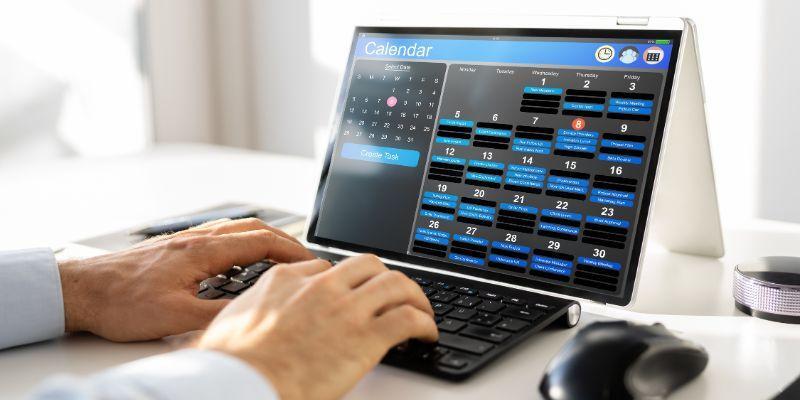In the healthcare sector, time plays a crucial role. Waiting for medical attention goes beyond just waiting – it can bring worry and even costs for patients.
Imagine sitting in a doctor’s office, feeling nervous about what’s wrong. The longer the wait, the more these feelings can grow. This experience, especially for young people, can be scarier.
According to a study, the effect of waiting in healthcare means more than just spending time in waiting rooms. It can make people feel anxious and worried.
But it’s not just fear – waiting can also cost money. For example, missed work or school because of waiting for a doctor’s appointment can have actual costs for families.
These are some of the things we’ll be looking at in this article – how waiting in healthcare can make people worry and lose money and why it’s essential for everyone to be aware of the impact of waiting times on patients.
What do Patients say about Waiting in Healthcare?
Patient experiences with waiting in healthcare settings reveal a multi-faceted impact. Beyond the mere passage of time, prolonged waits can significantly influence patient retention, satisfaction, and Net Promoter Scores (NPS).
According to a survey conducted by Business Wire, patients who experienced shorter waiting times were found to be more likely to return to the same healthcare provider for future needs. This underscores the crucial link between waiting experiences and patient retention rates.
Moreover, patient satisfaction levels were directly affected by waiting times. Patients who faced extended wait times reported lower satisfaction scores compared to those with shorter waits. This emphasizes the substantial role waiting plays in shaping overall patient experiences.
The Net Promoter Score (NPS), a metric indicating how likely patients are to recommend a healthcare provider, also reflects the Effect of Waiting in Healthcare.
As per a recent study, patients who had to endure lengthy waits showed a lower likelihood of recommending the provider to others, leading to lower NPS scores.
This signifies that patient wait times impact an individual patient’s perception and influence the provider’s reputation within their community.
In essence, patient feedback underscores the profound significance of waiting times in healthcare. It reveals a direct correlation between waiting experiences, patient satisfaction, retention, and even the provider’s standing within the broader patient population.
The Effect of Patient Health Status on Waiting in Healthcare

Patient waiting time is a crucial aspect of healthcare, and it can vary depending on a person’s health status. Whether in a universal healthcare system or private practice, patient waiting times can significantly impact a patient’s experience and outcomes.
Let’s explore this topic, keeping in mind the perspective of an eighth grader.
1. How Health Status Affects Waiting Times
Imagine two different patients: one with a minor illness like a cold and another with a more serious condition like a broken bone. The patient with the cold might need to wait a bit longer because they are not in immediate danger.
On the other hand, a patient with a broken bone might be seen more quickly because their health issue requires urgent attention. This shows how health status can influence the order in which patients are treated.
2. Universal Healthcare Wait Times
In some countries, there is a system called universal healthcare. While it ensures that everyone gets medical care, it can also lead to longer waiting times.
When more people have access to healthcare, the demand for appointments and treatments increases. This is why universal healthcare wait times can sometimes result in longer waits, even for essential procedures.
3. Patient Flow Management
Healthcare facilities use something called patient flow management to organize the order in which patients are seen. This helps balance the needs of different patients.
For example, patients with more severe health problems might be prioritized, but this doesn’t mean that others are forgotten. It’s about finding the right balance to make sure everyone gets the care they need.
4. Balancing Act for Healthcare Providers
Healthcare providers have challenging jobs. They need to take care of many patients with various health needs. Sometimes, they have to make tough decisions about who gets treated first. They try their best to ensure that no one’s health is compromised due to wait times in healthcare.
It’s a delicate balance that healthcare providers manage to ensure everyone receives the care they need, even if waiting in the hospital can sometimes be frustrating.
Reasons for Patient Satisfactory Score Drop Due to Waiting
In healthcare, waiting extends beyond clocks, impacting patient satisfaction scores profoundly. Let’s explore how prolonged waits affect satisfaction, revealing the intricate link between time and care quality.
- Prolonged Wait Times: Lengthy waiting periods can lead to patient frustration and dissatisfaction. Waiting for an extended time to see a healthcare provider can erode the overall experience.
- Uncertainty and Anxiety: Waiting without clear information about when one will be seen can lead to increased anxiety and a sense of uncertainty. Patients may worry about their condition worsening during the wait.
- Perceived Lack of Respect: When patients feel their time is not valued and they are not kept informed about delays, it can lead to a sense that their needs are not being respected.
- Negative Perception of Care: Long waits might lead patients to believe that the healthcare facility needs to be more organized or efficient, negatively affecting their perception of the quality of care they will receive.
- Impact on Well-being: Long wait times for healthcare can exacerbate discomfort and pain, particularly for patients who are unwell. This can lead to dissatisfaction if they feel their well-being needs to be prioritized.
- Inadequate Communication: Lack of communication about delays or reasons for waiting can cause frustration. Patients appreciate being kept informed and having their questions answered.
- Disruption of Plans: Waiting for an extended period can disrupt patients’ daily schedules, causing inconvenience and potentially impacting their overall satisfaction.
- Impression of Unimportance: When patients are made to wait without acknowledgment, it can create the impression that their health concerns are not significant.
In short, patient wait times and satisfaction are inversely related. Addressing these factors by improving communication, managing wait times, and showing respect for patients’ time and well-being can help mitigate the negative impact of waiting on patient satisfaction scores.
Best Strategies to Minimize the Waiting Time in the Healthcare Sector

Minimizing waiting times in the healthcare sector is a paramount goal to enhance patient experiences and optimize care delivery. Implementing efficient strategies can lead to improved patient satisfaction and overall operational effectiveness.
Here are some critical approaches, including the utilization of modern management solutions, to address this critical issue:
- Streamlined Patient Flow: Analyze the patient journey from registration to consultation, diagnostics, and treatment. Identify bottlenecks and inefficiencies to create a smoother flow that reduces unnecessary waiting periods.
- Appointment Scheduling: Implement advanced appointment scheduling systems that allocate appropriate time slots for different types of appointments. This ensures that healthcare providers can allocate sufficient time for each patient without overloading their schedule.
- Digital Check-In and Pre-Registration: Enable patients to digitally complete registration and pre-visit documentation before arriving at the facility. This reduces administrative tasks during the visit and expedites the process.
- Telehealth Integration: Incorporate telehealth services for non-urgent consultations, follow-ups, and minor concerns. This reduces the number of in-person visits and shortens waiting times for those who need to be physically present.
- Resource Allocation: Optimize staffing levels based on peak and off-peak times. Having the right number of healthcare professionals available during busy hours can help reduce patient waiting.
- Queue Management Solutions: Utilize queue management systems that provide real-time information about wait times, allowing patients to make informed decisions about their visit timing.
- Multidisciplinary Teams: Create teams comprising specialists who can collaborate to address a patient’s needs in a single visit, reducing hospital waiting times and the need for multiple appointments.
- Continuous Process Improvement: Regularly review and refine operational processes to identify areas where waiting times can be further reduced. Engage staff in seeking innovative solutions.
- Patient Communication: Keep patients informed about delays, estimated wait times, and any changes in their appointments. Transparent communication helps manage expectations.
- Technology Adoption: Embrace digital tools for electronic health records, prescription management, and communication between healthcare providers. This minimizes manual processes that can contribute to waiting times.
Adopting these strategies and leveraging advanced queue management solutions in healthcare facilities can significantly reduce waiting times, enhance patient satisfaction, and improve the overall quality of care provided.
The effects of waiting in healthcare – FAQs
How Does Waiting Time Affect Patients?
Waiting time in healthcare can lead to increased anxiety, frustration, and a negative perception of care. Prolonged waits can diminish patient satisfaction and impact their overall experience.
Do Waiting Times Affect Health Outcomes?
Yes, prolonged waiting times can indirectly impact health outcomes by causing stress, delaying timely interventions, and affecting patient adherence to treatment plans.
Why Is Patient Waiting Time Important?
Patient waiting time is vital as it shapes patient satisfaction, perception of care quality, and the overall healthcare experience. Reducing wait times contributes to better patient outcomes and a more positive healthcare environment.
Conclusion
When it comes to healthcare, waiting isn’t just about watching the clock. It also impacts patients’ feelings, sense of importance, and even their health. Waiting times can bring about worries and uncertainty. This is why when we talk about the effects of waiting in healthcare, a feeling of frustration is bound to be there.
But there’s good news! Hospitals and doctors are working on ways to make waiting times shorter and less stressful. They’re using special tools and strategies to organize lines and let patients know how long they might have to wait. This helps patients know what to expect and eases their worries.
The goal is to make sure patients feel better from the treatments they receive, and from the moment they step into the healthcare facility until they leave.
So, while waiting will always be a part of healthcare, the aim is to make it as stress-free and quick as possible for everyone, and that is something the whole system is working on.
BOOK A FREE DEMO





